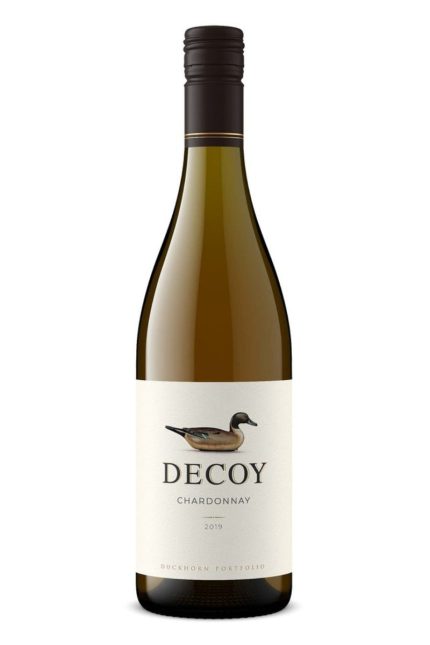Chardonnay is one of the most popular and widely recognized white wines in the world. With its versatility and ability to adapt to various terroirs, it has captivated wine lovers and casual drinkers alike. In this guide, we will explore the origins, characteristics, flavor profiles, food pairings, and notable regions for Chardonnay, providing a comprehensive understanding of this beloved varietal.
Origins and History
chardonnay wine‘s roots can be traced back to the Burgundy region of France, where it has been cultivated for centuries. The grape is believed to be a natural cross between the Pinot Noir and Gouais Blanc varieties. Its name is derived from the village of Chardonnay in Burgundy, a region renowned for producing some of the finest wines in the world.
During the late 20th century, Chardonnay gained immense popularity, particularly in the United States, Australia, and other wine-producing countries. This increase in production led to the grape’s adaptability in different climates and soils, allowing for a diverse range of styles and expressions.
Characteristics of Chardonnay
Chardonnay grapes are typically green to yellow in color and are known for their thick skins. This varietal is celebrated for its wide range of flavor profiles, which can be influenced by several factors, including climate, soil, and winemaking techniques.
Flavor Profiles
- Fruit Flavors: Chardonnay can exhibit a plethora of fruit flavors, from green apple and pear to tropical fruits like pineapple and mango. In cooler climates, such as Burgundy, it often leans towards crisp citrus notes, while warmer regions, like California, can produce ripe, juicy flavors.
- Oak Influence: Many Chardonnays are aged in oak barrels, imparting flavors of vanilla, butter, and toast. The degree of oak aging can vary widely, with some producers opting for minimal oak influence, resulting in a fresher, more mineral-driven wine, while others embrace full malolactic fermentation and extensive oak aging for a richer profile.
- Acidity and Structure: Chardonnay typically has medium to high acidity, providing balance and structure. The acidity helps preserve the wine and enhances its aging potential.
Styles of Chardonnay
Chardonnay is incredibly versatile, leading to various styles of wine. Here are some common types:
- Unoaked Chardonnay: This style is characterized by its bright, crisp flavors and fresh acidity. It often showcases pure fruit expressions and mineral qualities, making it an excellent choice for those who prefer a lighter, more straightforward wine.
- Oaked Chardonnay: This style is richer and creamier, often featuring buttery flavors and a round mouthfeel. The oak aging adds complexity and depth, making these wines popular among those who enjoy a fuller-bodied white.
- Sparkling Chardonnay: Often used in the production of sparkling wines like Champagne, chardonnay wine can contribute elegance and finesse. These sparkling wines can range from crisp and zesty to rich and complex, depending on the winemaking techniques used.
- Chardonnay from Different Regions: The grape’s adaptability allows it to thrive in various climates. For example, Chablis (France) produces a steely, mineral-driven Chardonnay, while Napa Valley (California) is known for rich, fruit-forward wines with significant oak influence.
Food Pairings
Chardonnay’s versatility extends to food pairings, making it an excellent choice for a wide range of dishes. Here are some classic pairings:
- Seafood: The bright acidity of an unoaked Chardonnay pairs beautifully with fresh seafood, such as oysters, scallops, and grilled fish.
- Poultry: Rich, oaked Chardonnays complement roasted chicken or turkey, especially when prepared with creamy sauces.
- Pasta Dishes: Creamy pasta dishes, such as fettuccine Alfredo, are an excellent match for oaked Chardonnay, as the wine’s buttery notes harmonize with the creaminess of the dish.
- Cheese: Aged cheeses, like Brie and Camembert, pair well with Chardonnay, creating a delightful balance between the wine’s acidity and the cheese’s creaminess.
Notable Chardonnay Regions
While Chardonnay is grown worldwide, several regions are particularly renowned for their exceptional expressions:
- Burgundy, France: Often regarded as the birthplace of Chardonnay, Burgundy is home to some of the most prestigious Chardonnay vineyards, including those in Chablis, Meursault, and Puligny-Montrachet. Here, the wines are known for their complexity, minerality, and elegance.
- California, USA: The diverse climate and geography of California have made it a significant producer of Chardonnay. Regions like Napa Valley and Sonoma County are known for their rich, fruit-forward styles with pronounced oak influence.
- Australia: Australia has gained recognition for its Chardonnays, particularly from regions like Margaret River and Adelaide Hills. These wines often blend the bright fruit characteristics of the New World with balanced acidity.
- New Zealand: New Zealand’s cool climate allows for the production of crisp, vibrant Chardonnays. Regions like Marlborough and Central Otago are known for their fruit-driven styles with a mineral backbone.
- South Africa: South African Chardonnay has been gaining traction, with regions like Stellenbosch and Elgin producing high-quality wines that showcase both fruit and oak influences.
Conclusion
Chardonnay is a dynamic and multifaceted grape variety that continues to evolve and adapt. Whether you prefer the crispness of an unoaked version or the richness of an oaked style, there is a Chardonnay for every palate. Its wide range of flavor profiles, adaptability to different regions, and compatibility with various foods make it a staple in the world of wine. As you explore the world of Chardonnay, you’ll discover the nuances and complexities that this grape has to offer, ensuring a delightful experience in every glass. So, pour yourself a glass, savor the aromas, and enjoy the journey through the enchanting world of Chardonnay!
Pigeon by Stovekraft Amaze Plus Electric Kettle (14289) with Stainless Steel Body, 1.5 litre, used for boiling Water, making tea and coffee, instant noodles, soup etc. (Silver)
₹549.00 (as of 22 November, 2024 18:32 GMT +05:30 - More infoProduct prices and availability are accurate as of the date/time indicated and are subject to change. Any price and availability information displayed on [relevant Amazon Site(s), as applicable] at the time of purchase will apply to the purchase of this product.)Trance 100% Waterproof Premium Cotton Feel Mattress Protector King Size 78x72 Inches | Breathable and Hypoallergenic Ultra Soft Fitted Bed Protector Cover (78"x72" Fits Upto 10 Inches - King, Grey
₹669.00 (as of 22 November, 2024 18:32 GMT +05:30 - More infoProduct prices and availability are accurate as of the date/time indicated and are subject to change. Any price and availability information displayed on [relevant Amazon Site(s), as applicable] at the time of purchase will apply to the purchase of this product.)RADIANT Basket Drainer & Dish Drainer Basket for Kitchen/Utensil Stand for Kitchen/Dish Drying Rack with Drainer/Bartan Stand/Dish Rack for Kitchen (Brown, Plastic)
₹269.00 (as of 22 November, 2024 18:32 GMT +05:30 - More infoProduct prices and availability are accurate as of the date/time indicated and are subject to change. Any price and availability information displayed on [relevant Amazon Site(s), as applicable] at the time of purchase will apply to the purchase of this product.)TEKCOOL Plastic Fridge Storage Boxes (Pack Of 6), Fridge Organizer With Removable Drain Plate Tray Keeps Fruits, Vegetables, Meat, Fish Fresh Longer (1500 Ml),White
₹299.00 (as of 22 November, 2024 18:32 GMT +05:30 - More infoProduct prices and availability are accurate as of the date/time indicated and are subject to change. Any price and availability information displayed on [relevant Amazon Site(s), as applicable] at the time of purchase will apply to the purchase of this product.)SHAYONAM 3IN1 Portable Car Vacuum Cleaner with Blower | USB Rechargeable Wireless Handheld Car Vacuum Cleaner Traveling, Camping Reusable,Portable,Rechargeable (Vacuum with Blower)(Multy)/*-
₹699.00 (as of 22 November, 2024 18:32 GMT +05:30 - More infoProduct prices and availability are accurate as of the date/time indicated and are subject to change. Any price and availability information displayed on [relevant Amazon Site(s), as applicable] at the time of purchase will apply to the purchase of this product.)Discover more from The General Post
Subscribe to get the latest posts sent to your email.





